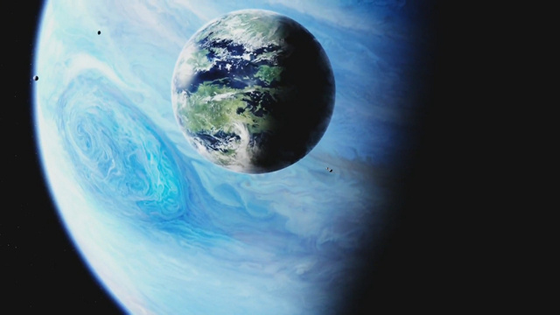ASTRONOMERS discover first EXOMOON. Maybe.
Well, I had no idea. No! Idea! That we weren’t already in the exomoon game. Just sort of figured that all those exoplanets we were spotting had their own luna-esque buddies.
It may not look anything like Avatar‘s Pandora or Jedi‘s Endor, but if verified, it could be the first moon ever discovered outside our solar system. Located 1,800 light years away, it’s a large moon orbiting a planet four times the size of Jupiter. But strangely, the duo isn’t even remotely close to a star.
To make the discovery, David Bennett of the University of Notre Dame, Indiana, and colleagues used a technique that’s not often used to detect exoplanets. It’s called gravitational microlensing, an optical phenomenon where light emanating from a distant object gets warped and distended by the gravity of another nearby object. This warping can create a magnification effect, making celestial objects, like planets and galaxies, easier to find. And now, owing to this latest discovery, it can also help us find moons as well.
Back in 2011, Bennett’s team spotted a microlensing event that amplified the brightness of a star by a factor of 70 times. An hour later they observed a second event, this one much smaller. The astronomers interpreted this as a large object passing in front of the star, followed by a smaller one.
They posited two explanations: Either it’s a moon orbiting a planet, or it’s a brown dwarf (a kind of planet that doesn’t have quite what it takes to be a star) orbited by a Neptune-mass planet. But after performing Bayesian calculations on the data, the astronomers had to admit that the “most likely” explanation is the planet/moon hypothesis.
If the system consists of a planet and a moon, however, it’s a strange one, indeed. First, the pair is adrift in space. The star that was used to detect the microlensing event is far, far away. Now, rogue planets do exist, but if confirmed this would be the first one discovered to have a moon; and in fact, this pair might actually be two planets that were ejected from a tumultuous star system, likely a binary system. That said, this observation would seem to add credence to the brown dwarf theory — but the hard data suggests otherwise.
Second, the moon, which is about half the size of Earth (which is huge by moon standards), orbits its host planet at an extreme distance — about 20 million kilometers out. Contrast this with Jupiter’s largest moon, Ganymede, which is about 1 million kilometers out.
[io9]




